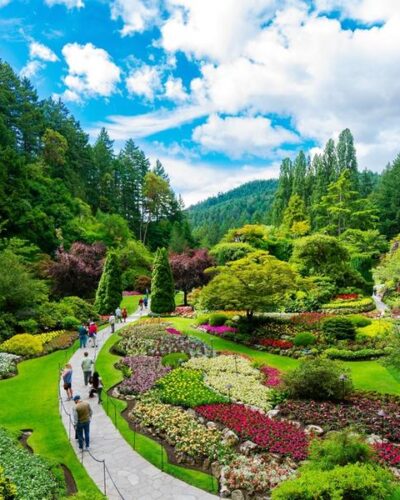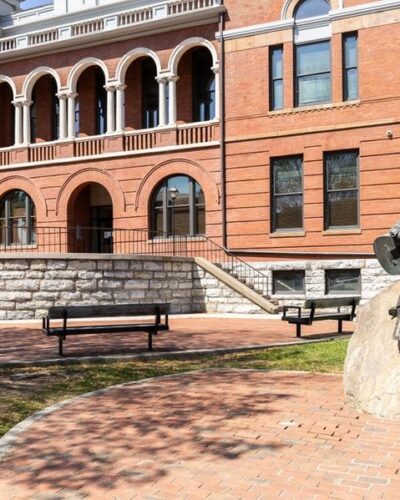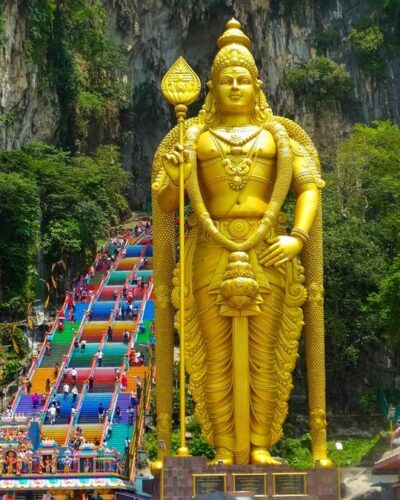Cape Town is renowned for its spectacular landscape, beautiful white sand beaches, and thriving cosmopolitan atmosphere, which is why it’s one of South Africa’s most popular tourist destinations.
The region is packed with visitors for most of the year, and it’s particularly busy during the hot summer months of December through February. There’s no shortage of attractions in the Western Cape, from museums to mountain ranges and shopping centers to killer surf breaks.
It’s easy to find activities to suit all ages and interests. The hardest part is choosing which sights to squeeze into a single trip. In this guide, we’ve highlighted some of the best and most popular things to do in Cape Town to help you plan your vacation.
Take In Table Mountain
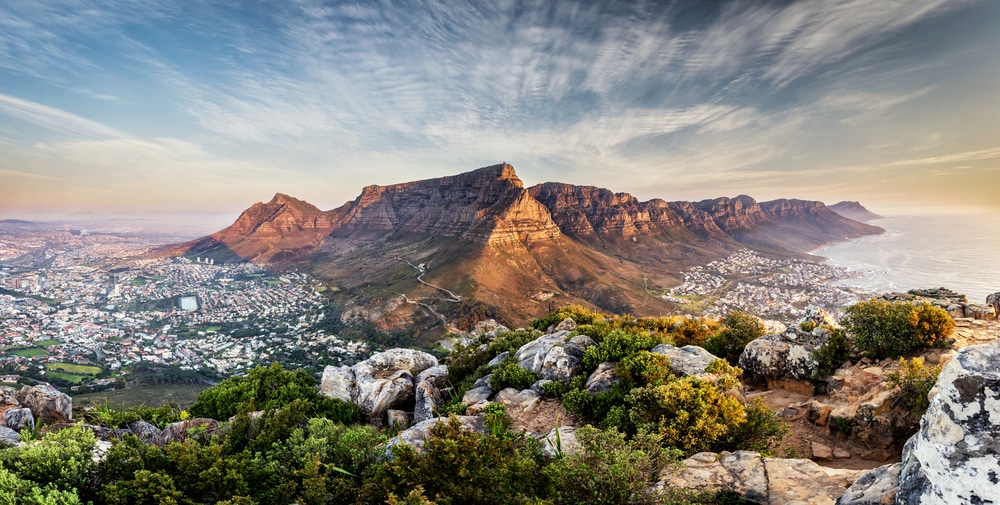
Table Mountain serves as Cape Town’s rugged backdrop and is an essential visit for every tourist. This 3,563-foot sandstone and slate mountain is one of the World’s New Seven Wonders.
Its flat top offers spectacular views of the surrounding region, including Devil’s Peak and Lion’s Head Mountain.
The western side of Table Mountain National Park looms over the Cape Peninsula’s Atlantic coastal resorts in a series of granite peaks known as the Twelve Apostles. Enthusiastic hikers take the Kasteelspoort hiking trail up this side of the mountain for incredible views of the Atlantic.
A far more popular route is the Platteklip Gorge trail which involves a steep and challenging climb up the mountain’s front face. It takes you right the way up to Maclear’s Beacon, the peak’s highest point.
If hiking isn’t for you, you can go up Table Mountain via cable car. The aerial cableway departs every 10 to 15 minutes. The cable cars rotate 360 degrees throughout the 5-minute journey so you can enjoy fantastic views of the mountain and surrounding Table Mountain National Park. The park is home to more than 1,470 species of flora and a diverse array of wildlife to spot, including baboons, caracals, and sub-nosed dassies.
Tip: It gets chilly at the summit of Table Mountain, so bring layers to keep warm. Winds can easily get strong enough that the cableway closes, so check the weather forecast and avoid visiting on windy days.
Discover the Tip of Africa at Cape Point
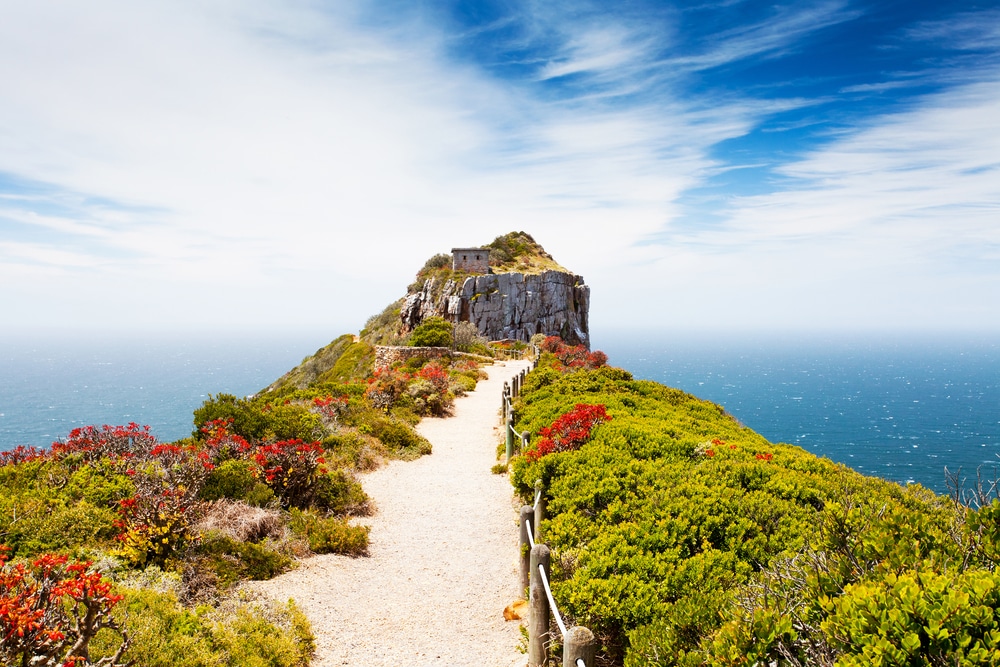
Cape Point is the southernmost tip of Table Mountain National Park and the most southwesterly tip of Africa. It‘s around 37 miles south of the Mother City and undoubtedly worth a day trip to explore its wild, unspoiled landscape.
Cape Point Nature Reserve is home to a huge variety of wildlife, including Cape Mountain zebras, baboons, mongooses, and over 250 species of bird. You can enjoy amazing panoramic views of the area when you take the Flying Dutchman Funicular up to Cape Point lighthouse.
Another must-visit spot near Cape Point is the Cape of Good Hope. This rocky headland is what divides the Atlantic Ocean and False Bay, and it offers beautiful views out to sea. Be sure to bring layers, as it can get very windy and chilly.
Stroll in Kirstenbosch National Botanical Gardens

- Website: sanbi.org/gardens/kirstenbosch/
- Address: Rhodes Dr, Newlands, Cape Town, 7735
On the eastern edge of Table Mountain lies Kirstenbosch Botanical Gardens which forms part of the Cape Floristic Region UNESCO World Heritage Site. Over 7,000 native South African plant species reside in this area, including the indigenous fynbos that South Africa is renowned for.
The gardens have been arranged so that fresh blossoms bloom throughout the year, meaning you’ll see a riot of color no matter which season you visit. Be sure to check out the Tree Canopy Walkway, which offers panoramic views of the gardens.
There’s a host of marked trails throughout the gardens to explore, most of which make for easy walking. One of the longest and most popular routes leads up Skeleton Gorge to the top of Table Mountain. It’s a great way to reach the peak via a shaded route during the height of summer.
Learn About the Past on Robben Island
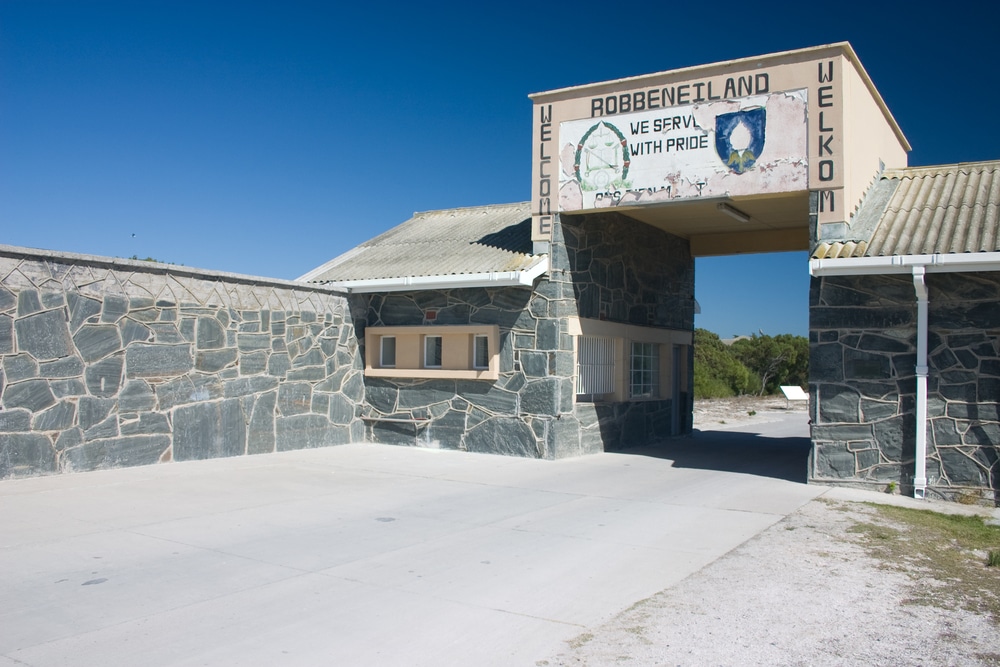
Robben Island, now a UNESCO World Heritage Site, was once home to a brutal prison in which Nelson Mandela was incarcerated for 18 years during South Africa’s apartheid era. Today, the island is open to the public and serves as an important reminder of the atrocities of the apartheid.
Visits to Robben Island begin at the Nelson Mandela Gateway, which is situated on the V&A Waterfront. Here, you can explore multimedia exhibits that give insights into Mandela’s life and political activism.
Guided tours of Robben Island are given by former prisoners who can give firsthand accounts of their harrowing experiences. For those who are keen to learn more about South Africa’s complex and turbulent history, Robben Island is an important part of the picture and an essential place to visit.
Boat trips to the island itself take between 30 and 60 minutes, depending on weather conditions.
Cruise Along Chapman’s Peak Drive
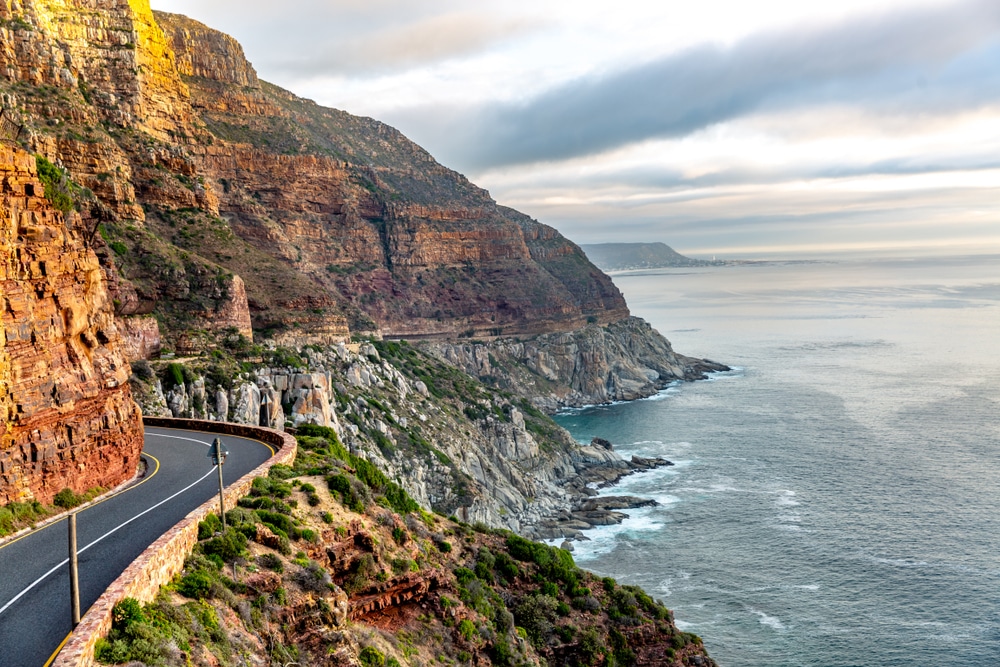
The 5.5-mile stretch of winding road cut into the sheer face of Chapman’s Peak Mountain is known as Chapman’s Peak Drive or “Chappies” by locals. Chapman’s Peak sits right at the edge of the Atlantic Ocean, which means the road offers incredible views as far as 1,650 feet above the sea.
The road has a total of 114 curves carved into the rock face, so this isn’t a route for people susceptible to motion sickness. The drive can be dangerous in severe weather, but the road is closed off when bad conditions are forecast.
Sunset is a popular time to head out on Chapman’s Peak Drive, but it can get busy at this time. There are plenty of places to stop, take pictures and soak in the view, so set a steady pace to ensure you don’t miss them. You might spot whales and dolphins in the ocean if you look carefully!
Hike Signal Hill and Listen for The Noon Gun
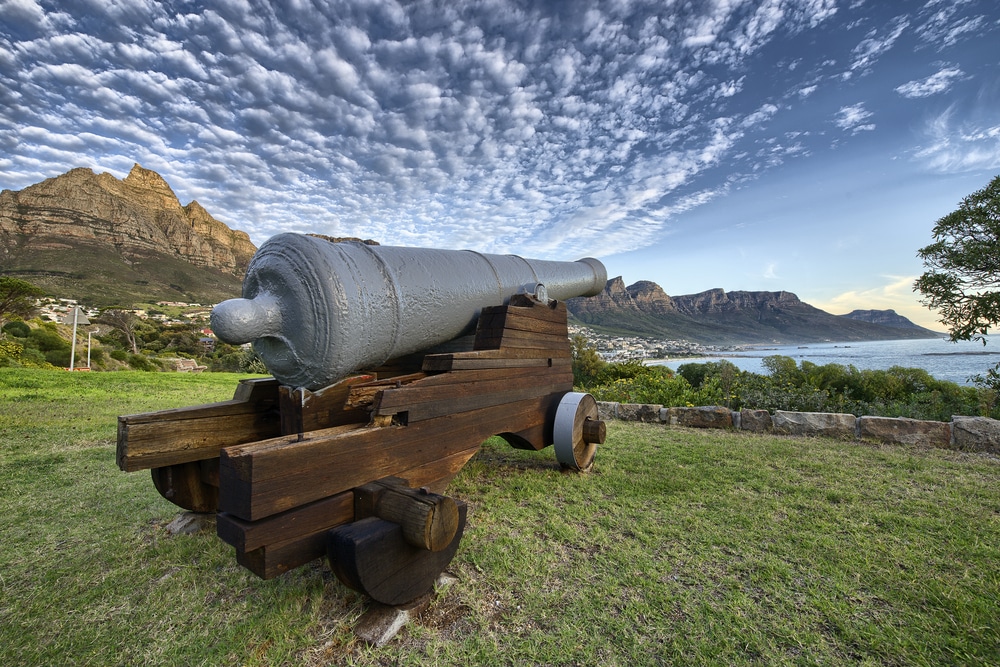
Signal Hill is a flat-topped 1,148-foot peak that serves as the backdrop to the V&A Waterfront in Cape Town city. It sits right next to Lion’s Head, and you can either walk or hike to the summit. Sunset is the best time to visit to catch city views while it’s lit up in shimmering lights after dark.
Hikes to the top of Signal Hill take around 90 minutes and are moderately challenging due to steep inclines. It’s not a safe spot for hiking after dark, so take the car if you want to watch the sun go down.
The Noon Gun has taken place at the Lion Battery on Signal Hill since 1806. Every day between Monday and Friday, a Dutch naval gun is fired at noon to serve as a time marker for ships anchored in the bay. You can watch a free presentation about the Noon Gun and watch the firing occur.
Shop and Eat at The Old Biscuit Mill
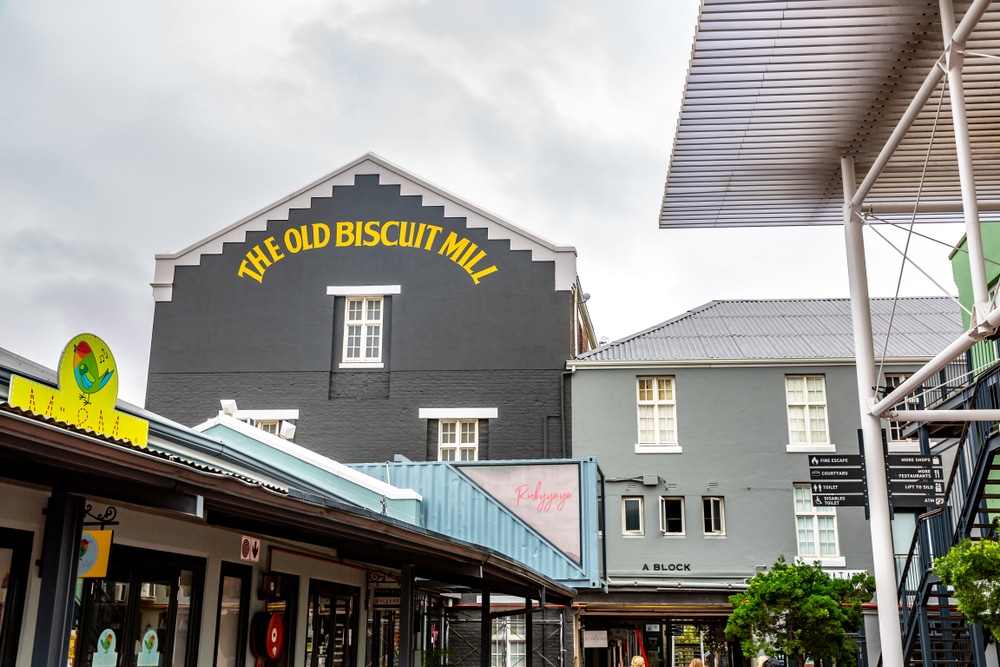
- Website: theoldbiscuitmill.co.za/
- Address: 375 Albert Rd, Woodstock, Cape Town, 7915
At the heart of Cape Town’s college neighborhood of Woodstock lies the Old Biscuit Mill. Not only is there fantastic architecture to see here, but the array of unique restaurants, food stores, designer shops, and workshop spaces gives the area a lively, creative vibe.
The Old Biscuit Mill is a brilliant place to meet and see the work of some of South Africa’s best and brightest artists and designers. On Saturday and Sunday mornings, you can buy wares from local artisans selling their creations in the Neighbourgoods Market.
Visit the Iziko Museums of South Africa
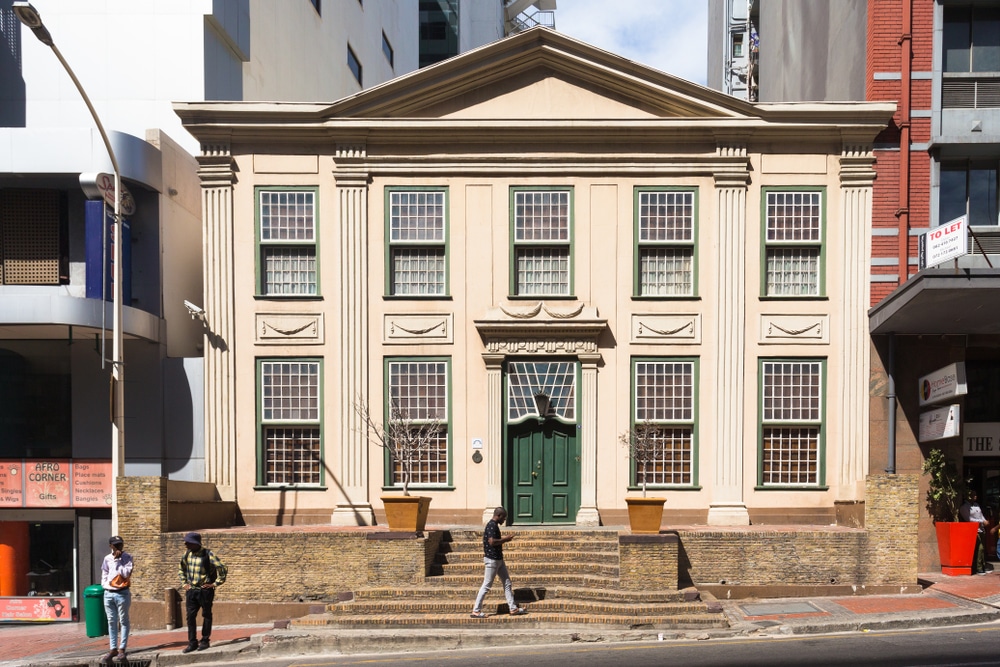
There are 11 museums in the Iziko Museums Group, and they’re all governed by a council appointed by South Africa’s Minister of Arts and Culture.
The main South African museum is in Company’s Garden in central Cape Town, and it has a huge collection that includes fossils and historical tools that give valuable insights into the ancient history of South Africa.
The Old Town House is another popular attraction in the Cape Town center, and you can find it in Green Market Square. The Dutch-Rococo style building was once Cape Town’s City Hall when it was originally constructed in 1755. Today it’s home to a display of paintings by 17th-century Dutch and Flemish artists.
Koopmans-de Wet House is a great spot to visit for those interested in 17th- and 18th-century South African architecture and life. It is furnished and decorated in the style that was common for wealthy Cape families in the 1700s.
Learn Cape Town’s History at the District Six Museum
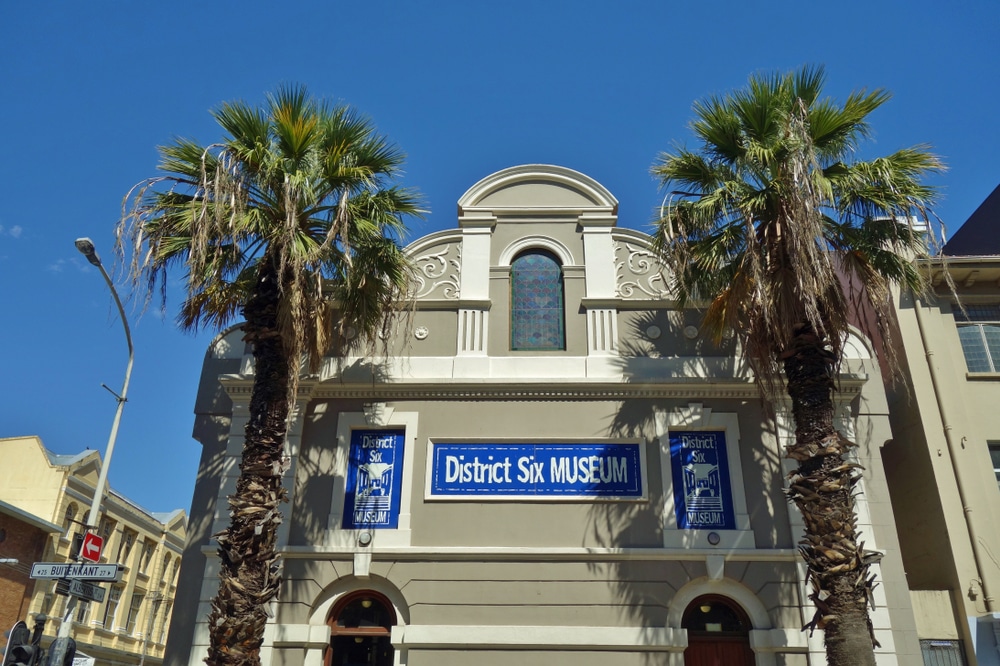
- Website: www.districtsix.co.za/
- Address: 25A Buitenkant St, District Six, Cape Town, 8000
In 1966, District Six was declared a “white” community by the oppressive apartheid regime, and 70,000 people were forced from their homes.
They established a shanty town in Cape Flats and endured immense hardship as a result. District Six no longer exists, but the District Six Museum tells the stories of the area’s former residents.
A permanent exhibit at the museum called Digging Deeper uses multimedia documentary and audio to portray life in District Six. It gives valuable insight into the oppression of the apartheid regime and the importance of social justice.
District Six is a key reference point in understanding Cape Town’s history. A visit to this museum is a somber one but incredibly important.
Get Cultural at Zeitz MoCAA and the Silo District

- Website: zeitzmocaa.museum/
- Address: V&A Waterfront Silo District, S Arm Rd, Waterfront, Cape Town, 8001
The Zeitz MoCAA (Museum of Contemporary Art Africa) is housed in a huge refurbished grain silo and offers the world’s biggest collection of contemporary African art. Situated on the V&A Waterfront, the museum itself is an impressive sight. It contains more than 100 galleries spread across nine floors.
You could easily spend a full day in the Zeitz MoCAA to take it all in. The area surrounding the museum is known as the Silo District, and since the museum’s opening in 2017, it has developed a vibrant, trendy atmosphere. There are plenty of cafes, coffee shops, restaurants, bars, and shops to explore after your visit.
Stroll Among Colorful Houses in Bo-Kaap
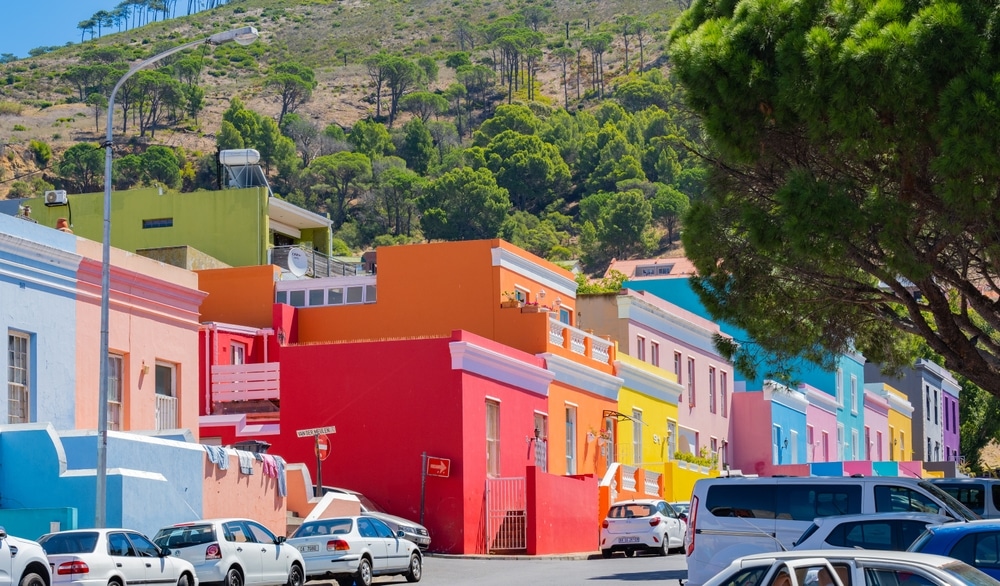
- Website: www.iziko.org.za/museums/bo-kaap-museum/
- Address: 71 Wale St, Schotsche Kloof, Cape Town, 8001
The Bo-Kaap region of Cape Town was once called the Malay Quarter since it was home to a community known as the Cape Malays.
In the 1600s, the Dutch brought slaves to South Africa from Indonesia, Malaysia, and other regions of Africa. The slaves shared the common language of Malay, which is how the term “Cape Malays” was coined.
In the 1700s, homes were built in the Malay Quarter and rented to the Cape Malay community. Once slavery was abolished, and former slaves were permitted to buy their homes, properties in the area were painted in bright pastel colors as a celebration of freedom.
The Bo-Kaap community is passionate about preserving its history and buildings, which is why a visit to the area is important for learning more about Cape history.
The Bo-Kaap Museum, housed in the oldest building in the area, offers fascinating insights into the Cape Malays’ impact on South African language and culture.
Spend a Day in Idyllic Stellenbosch
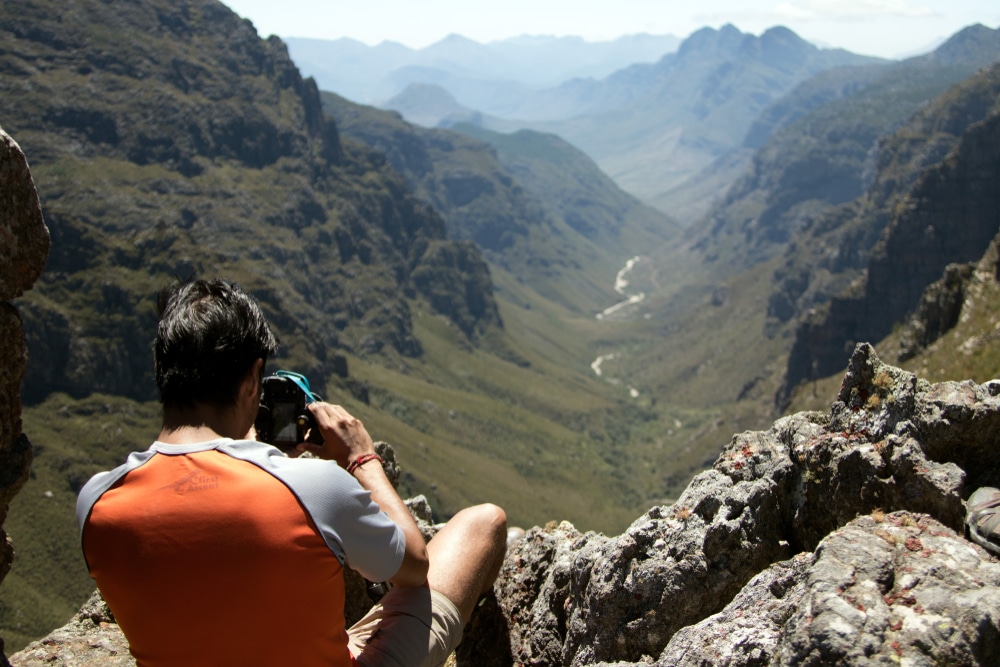
The pretty town of Stellenbosch is nestled in a beautiful valley and surrounded by lush vineyards and ancient oak forests. This region of Cape Town has fertile soils, and farms here produce some of South Africa’s best quality produce.
Since it’s 33 miles away from Cape Town city, you’ll want to take a day tour to Stellenbosch, but there’s no shortage of things to do:
- The Village Museum showcases the region’s history and includes four houses and gardens that were originally built between 1709 and 1850.
- The Ruper Museum features work from South African artists.
- The Botanic Garden at the University of Stellenbosch is a peaceful place to enjoy a quiet stroll and cup of tea.
- Jonkershoek Nature Reserve has a range of wilderness trails for hiking, biking, and other outdoor activities.
Go Wine Tasting at Groot Constantia
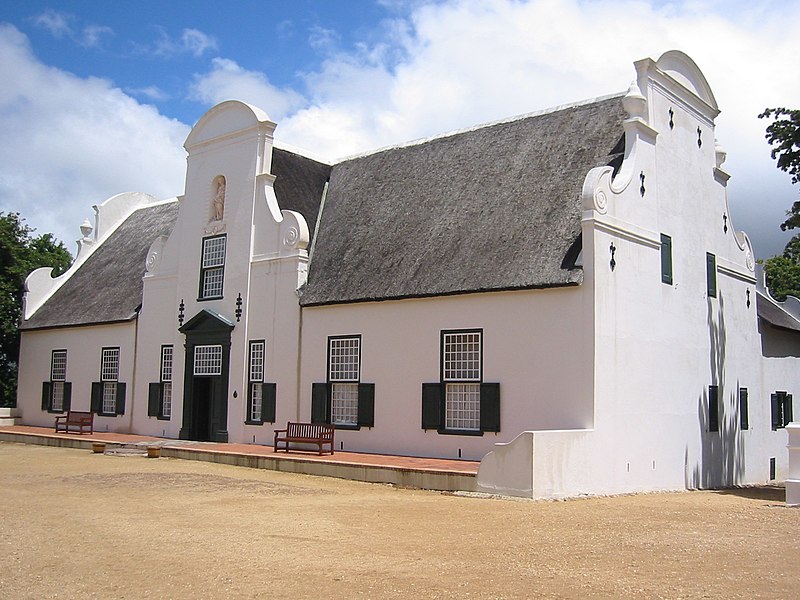
- Website: grootconstantia.co.za/
- Address: Groot Constantia Rd, Constantia, Cape Town, 7806
One of the oldest wine estates in the Western Cape Winelands is Groot Constantia, and it’s the perfect place to learn about South African wine. The farm has a museum in its old Manor House where you can learn about its origins and plenty of wine-tasting opportunities.
Groot Constantia is best known for its dessert wine, Grand Constance. Napoleon was said to have sipped this sweet wine on his deathbed. The drink was also mentioned in the books of Charles Dickens and Jane Austen, such is its renown.
Don’t miss out on other wineries in the Cape Winelands region. The Franschhoek Wine Tram is a brilliant way to see many of them within one day. It has a hop-on-hop-off service to let you visit as many vineyards as you like. Plus, audio guides provide fascinating information about the history of the region.
People Watch on Sea Point Promenade
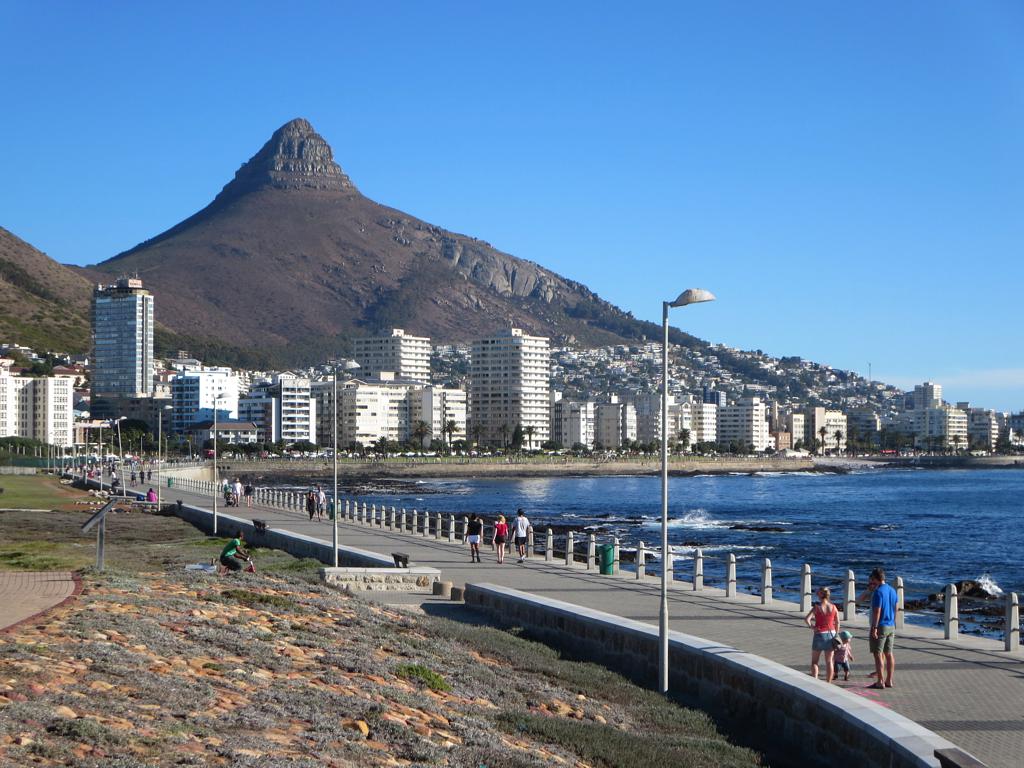
One of Cape Town’s most beloved attractions is Sea Point Promenade, where walkers, runners, cyclists, and skaters fill the long boardwalk to soak up the sun and views. The promenade runs from Mouille Point to Sea Point, and as you amble along it, be sure to look out for the series of street art installations.
Sea Point Promenade is a safe, atmospheric spot to let the kids burn off steam and indulge in people-watching. There’s an outdoor gym, a children’s playground, and many ice cream shops, cafes, restaurants, and bars.
The best time to visit Sea Point Promenade is at sunset. As the sun falls below the horizon, it lights up the Atlantic Ocean and casts Cape Town in a shimmering, golden glow.
Hang Out With Sharks at Two Oceans Aquarium
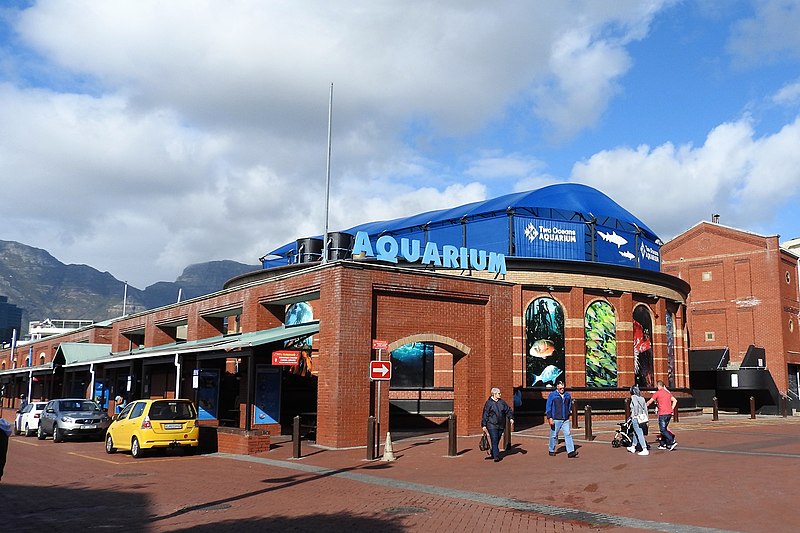
- Website: www.aquarium.co.za/
- Address: Dock Rd, Victoria & Alfred Waterfront, Cape Town, 8002
The Two Oceans Aquarium on the V&A Waterfront is one of the best ways to learn about the diverse range of marine life surrounding South Africa’s coastline. This is a brilliant attraction for people of all ages, but kids in particular love the opportunity to get close views of Cape Town’s native sea creatures.
There are plenty of opportunities to see many of the animals being fed, so make sure to check the feeding schedule. You can see sharks, eels, jellyfish, crabs, and even African penguins. A touch pool also gives kids chance to hold and interact with some of the sea life.
Two Oceans Aquarium is a great spot to visit on windy, overcast, or rainy days when you want to avoid outdoor activities. Note that it does get incredibly busy, so visit early in the day if you want to avoid the crowds.
Visit the City Hall and the Castle of Good Hope
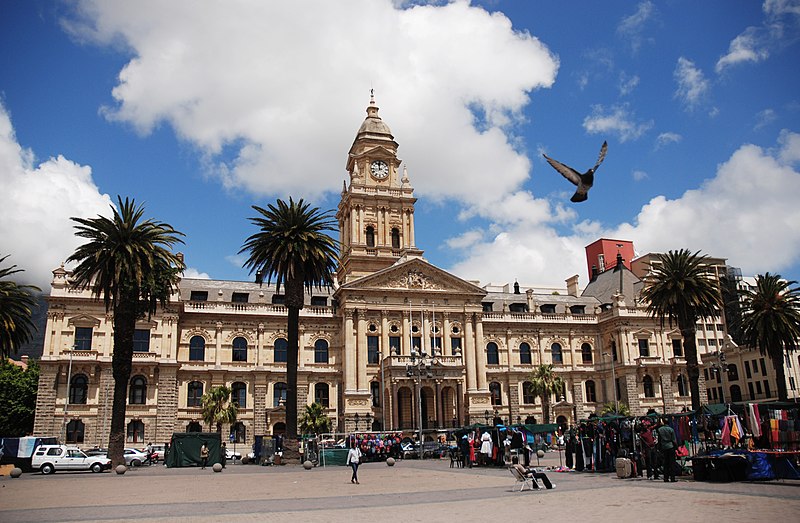
- Website: www.castleofgoodhope.co.za/
- Address: Darling St & Buitenkant St, Cape Town, 8001
Cape Town City Hall, which has a bell tower modeled on London’s Big Ben, blends Italian Neo-Renaissance and British Colonial styles. Inside, it has exquisite mosaic floors, a marble staircase, and beautiful stained glass. It’s a must-visit attraction for lovers of architecture.
Just across the road from City Hall is the Castle of Good Hope, which is South Africa’s oldest surviving stone building. Constructed in the form of a five-pointed star, it served as protection for early Cape Town settlers.
You can easily spend a half day in this area of Cape Town. A short walk up Longmarket Street leads you into the cobbled plaza of Greenmarket Square. Here, you can take in the architecture of a series of Art Deco buildings and explore a small flea market that takes place daily except Sundays.
Shop ‘Til You Drop at Canal Walk Shopping Center
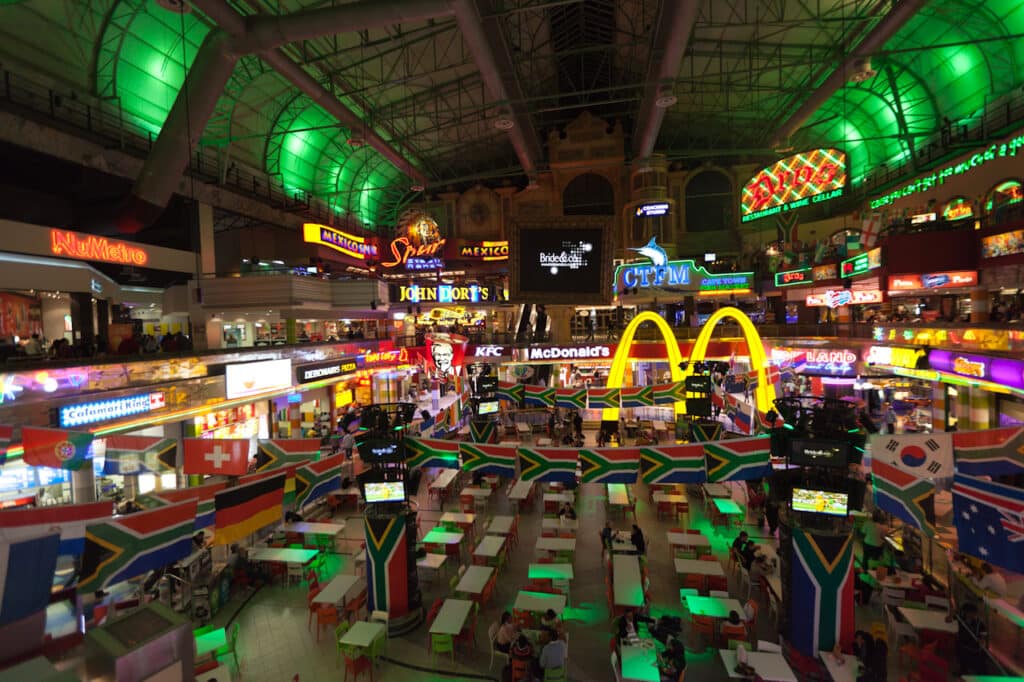
- Website: canalwalk.co.za/
- Address: 490 Century Blvd, Century City, Cape Town, 7446
Canal Walk is South Africa’s third biggest shopping center, and it’s a brilliant spot to visit when the weather isn’t so good. It’s home to more than 400 shops, with products ranging from clothing and jewelry to music and homewares.
The atmosphere at Canal Walk Shopping Center is lively and glamorous. Plenty of dining options are available, with restaurants dotted throughout the mall and a dedicated food court. There’s also a movie theater to while away a few hours on a rainy day.
Visit The Heart of Cape Town Museum
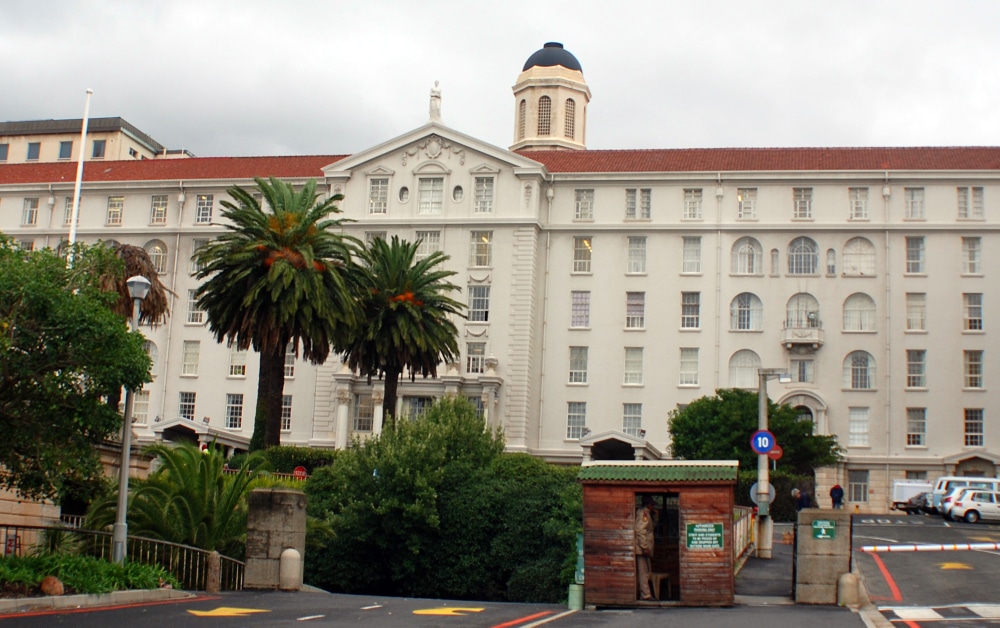
- Website: heartofcapetown.co.za/
- Address: Groote Schuur Hospital, Main Road, Observatory, Cape Town, 7935
The Heart of Cape Town Museum is tucked away in the Groote Schuur Hospital. It opened in 2007 to honor the first heart transplant that was performed at the hospital. Tours of the museum last for two hours and include information about the donor and recipient and the surgeon who performed the procedure, Christiaan Barnard.
This is an unusual attraction that is bound to be fascinating for anyone interested in the history of medicine. Groote Schuur Hospital sits at the foot of Devil’s Peak, which is on the eastern side of Cape Town.
If you plan to explore this part of the city, the Heart of Cape Town Museum is worth visiting.
Explore the Cape Peninsula

The Cape Peninsula is the perfect place to take long, scenic drives with plenty of sights along the way. This region of Cape Town is home to some of South Africa’s most popular beaches and holiday resorts.
Camps Bay and Clifton Beaches
Clifton is one of Cape Town’s most glamorous resorts, and its four beaches are some of the trendiest places to sunbathe, play volleyball, and party. Camp’s Bay is a little further south, and as a Blue Flag beach, it attracts huge crowds during the summer months.
If you’re looking for a safe, clean, and family-friendly beach close to Cape Town, Camps Bay Beach, and Fourth Beach at Clifton are both excellent choices.
Hout Bay
Accessed via the spectacular cliffside road known as Chapman’s Peak Drive, Hout Bay is a pretty and peaceful destination for soaking up the sun. The long and wide beach offers plenty of room for horseback riding, which is popular in this area.
Long Beach, Noordhoek and Kommetjie
Long Beach is an impressive 5-mile stretch of sand extending between Noordhoek’s seaside villages and Kommetjie. Both are great destinations for a peaceful day at the beach, but Noordhoek’s wild, rural atmosphere and friendly community make it particularly special.
Boulders Beach
On the False Bay side of the Cape Peninsula lies the popular suburb of Simon’s Town and its famous Boulders Beach. An endangered African penguin colony resides at Boulders Beach, so it’s an essential visit to catch these characterful creatures in their natural habitat.
Muizenberg
Another popular False Bay resort is Muizenberg which is home to a series of iconic multicolored beach huts. Waters in this region are relatively calm and much warmer than waters on the western coast of the Cape Peninsula.
This makes Muizenberg a popular spot for swimming, surfing, paragliding, and other water sports.
Explore and Stay in Cape Town
Whether you’re looking to get lost in nature or want to brush up on your history, Cape Town has no shortage of attractions to suit your tastes. Be sure to explore this beautiful region widely to enjoy everything it offers.





